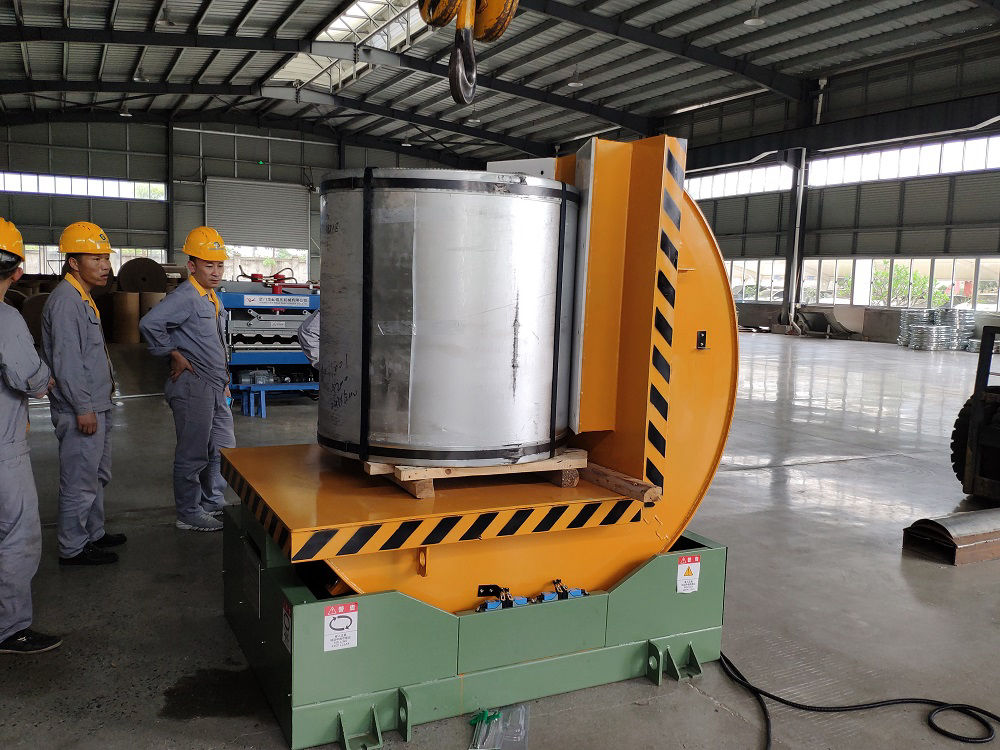
Better Upender Solution At Your Fingertips
POWERFUL UPENDER & TILTER
Our Products & Services
Our seasoned team, with over 15 years of expertise, excels at crafting tailor-made solutions that match your specific needs regarding load shape, maximum weight capacity, and handling techniques.
We specialize in industrial upenders and tilting machines, primarily used for hoisting or flipping hefty items like molds, coils, and rolls...

FULL-SERVICE MANUFACTURER FOR UPENDER
Providing Customized Solution per different Loads
As a full-service manufacturer, FHOPE proudly stands at the forefront of the industry, providing cutting-edge upender solutions. With years of expertise and a commitment to innovation, we've earned a reputation for quality and reliability.....


OUR UPENDER ALWAYS STAY WITH OPERATIOR FOR SAFETY AND LOWER LABOR INTENSITY


Mechanical Upender
solution 1-60T
- Driving By Motor with Gea
- Strong Structure
- Maintainer Free
- Customization per goal
Hydraulic Upenders
Solution 1-100T
- Driving By Hydraulic pump and cylinders
- Efficiency handling
- Reliable Simple structure
- Customization


Mechanical Upender










Hydraulic Upender







3 TIPS TO SHOW WHAT IS THE UPENDER
For better understanding the upender&tilter and choosing a proper solution per load handling, follow is some tips for helping to learn some information for choosing a right equipment decision.

TIP 1: Driving Way Of The Upender
Two driving ways to providing the Upender rotating force. No one solution is better than the other Suitable is the best!

Principle:
The motor provides power to the axle, which activates the gearbox. Once the gearbox is operational, it propels the chain forward. If necessary, a converter can adjust the input frequency to alter the speed of the motor.
This equipment is widely used across various industries due to its high efficiency, reliability, and safety features.

TIP 2: Structure of the upender includes below parts
To be a tough and safety heavy loading equipment the following main part need to be reinforce with Structural Mechanics

The upender and tilter come in various designs to suit different types of loads. For instance, there's a flat table for molds, a V-shaped table for coiled items, and a fork-type table that works with coil cars and cranes.
These tables can connect to equipment like coil cars, cranes with "C" hooks, or forklifts. In situations where digging a foundation pit isn't possible, custom solutions are available that allow for manual loading and unloading of goods at ground level using a hand lifter.

TIP 3. Working Table of The Upenders varies from load shape
For matching the handling goal, the working table could be designed in special form for different load size and shape.

Different items require specialized tables for handling. For example, coils need a fork-shaped table, while steel sheets work best with a "C" shaped turntable. Forklifts require a fork table, and a roller conveyor table is needed to link with a conveyor system. In short, the shape and type of the load determine the design of the working table.
For coiled materials like steel, wire, or aluminum, a "V" shaped table is used. Flat tables are suitable for dies, molds, or panels. And for rolls of paper or film, a fork table is the right fit.





